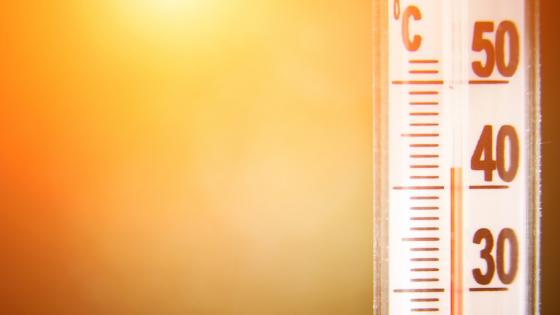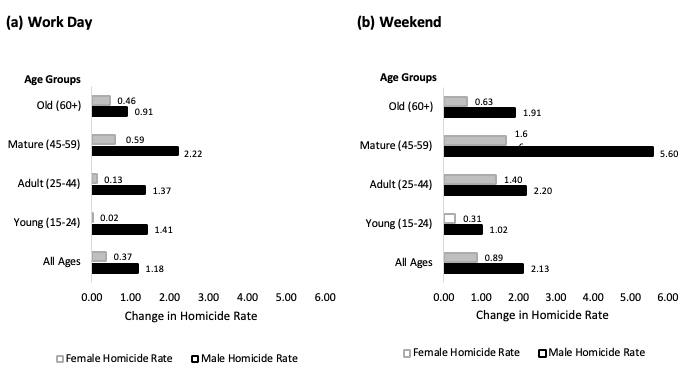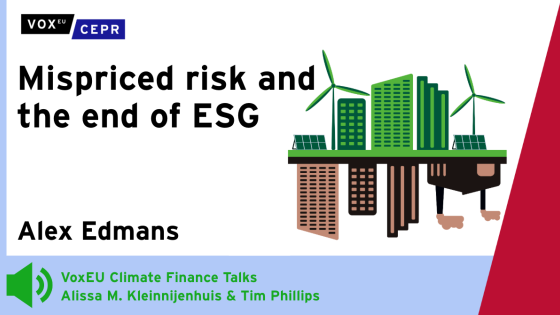Global climate change is hotly debated in academia, policy circles, and the media. Many people recognise the impact of climate change on specific countries or regions, but few consider the possible influence of climate change on personal interactions.
While the weather–mortality literature (reviewed in Dell et al. 2014) shows a connection between climate change, conflict, and warfare, the economics literature has so far barely examined how uncomfortably high or low temperatures might trigger aggressive individual behaviour. This is at odds with studies in biology and psychology, where the weather–behaviour linkage is ubiquitous. While we recognise violent individual acts are extremely hard to predict, any progress is valuable as it may help reduce victimisation.
The first comprehensive evidence of the impact of climate change on crime was presented by Ranson (2014), who analysed US historical data and estimated a positive relationship between hot temperatures and crime. While both hot and cold ambient temperatures are stressful, epidemiological evidence suggests that hot temperatures are more prone to hormone activation that leads to aggression, as suggested in Anderson (1989). Moreover, coldest temperatures are correlated with lower mobility — due to, say, snow, which constitutes a natural obstacle to crime.
Weather and violent mortality in Russia
While climate change may lead to more frequent extreme weather events globally, Russia is a key terrain to analyse the impact of extreme temperatures: its average daily temperatures range between -60°C and +35°C; its warmest month is July, with an average temperature of 15.1°C, while the coldest month, January, sports an average temperature of -25.2°C. Recent studies, relying on Russian data, show that extremely hot and cold temperatures increase mortality from all causes and from cardiovascular and respiratory diseases (Otrachshenko et al. 2017). Otrachshenko et al. (2018) show that heat waves and cold spells, i.e. a sequence of days with a similar pattern of extreme temperature, are especially harmful. On the other hand, the United Nations Office on Drugs and Crime (2019) shows Russia with the highest rate of intentional homicide in Europe and with one of the highest in the world, immediately after African and Latin American countries.
In our study (Popova et al. 2019), we examine the impact of hot and cold temperatures on homicide rates across gender and age groups, drawing on a unique dataset that compiles new climactic information for Russian regions over a 25-year period. We conclude that hot weather favours the occurrence of violence so that days with temperatures above 25°C are associated with an increase of 0.60 homicide victims per million inhabitants, which corresponds to about 87 additional deaths per hot day. The impact of a hotter day on homicides is equivalent to that of a 0.36%-increase in regional GDP per capita (for technical details, see Popova et al. 2019). On the other hand, cold temperatures do not affect violence rates. Thus, an increase in the number of extremely hot days as a result of global warming would result in a likely increase in homicide victims.
Inequality by gender and age
A key policy issue is whether certain population groups, such as women and the elderly, are differently vulnerable to victimisation. We find, indeed, strong evidence of unequal victimisation. In Figure 1, we show the impact of an extra day with temperatures above 25°C on the likelihood of becoming a homicide victim, across gender and age groups. Quantitatively, males are more often the victims; young and mature males are more likely to become victims of homicide than women.
Figure 1 Impact of one day with temperature above 25°C on homicide rates by gender and age groups
Notes: The homicide rate is calculated per one million of the corresponding population group. Solid bars represent an impact that is statistically significant at the 5% level.
Source: Popova et al. (2019).
A comparison of violence on weekdays with that on weekends strongly suggests the presence of domestic violence. On weekends, family interactions are likely to increase, and violence may occur at home. Figure 2 shows that both males and females are more likely to become homicide victims during weekends with unusually high temperatures, where overall victimhood rates roughly double for both males and females. In particular, among young and mature females with ages up to 44, the number of homicide victims multiply tenfold on weekends, and that difference is statistically significant for females between 25 and 44 years of age. This finding suggests domestic violence may be a core element in the weather–violence link. Given the scarcity of official statistics on domestic violence in Russia, we believe this conclusion, though merely suggestive, to be of utmost importance.
Figure 2 Impact of one work/weekend day with temperatures above 25°C on homicide rates by gender and age groups
Notes: Homicide rate is calculated per one million of the respective population group. Solid bars represent the impact statistically significant at 5% level.
Source: Popova et al. (2019).
In sum, the impact of hot temperatures on violence entails substantial personal, social, and economic costs. Our estimates suggest that female victims would have lived an additional 26.8 years and males, 25.1 years, and most of the victims are of working age. We also find that lower wages and higher unemployment interact with high temperatures to further increase the incidence of homicides.
Our results underscore the mechanisms linking high temperatures and violence, including the intermediating effects of economic conditions. These findings are relevant to designing policies that are effective in countering violence and their differential incidence among vulnerable population groups.
References
Anderson, C A (1989), “Temperature and aggression: Ubiquitous effects of heat on occurrence of human violence”, Psychological Bulletin 106(1): 74–96.
Dell, M, B F Jones and B A Olken (2014), “What do we learn from the weather? The new climate–economy literature”, Journal of Economic Literature 52(3): 740–98.
Deschênes, O, and M Greenstone (2011), “Climate change, mortality, and adaptation: Evidence from annual fluctuations in weather in the US”, American Economic Journal: Applied Economics 3(4): 152–185.
Otrachshenko, V, O Popova and P Solomin (2017), “Health consequences of the Russian weather”, Ecological Economics 132: 290–306.
Otrachshenko, V, O Popova and P Solomin (2018), “Misfortunes never come singly: Consecutive weather shocks and mortality in Russia”, Economics and Human Biology 31: 249–58.
Popova, O, V Otrachshenko and J Tavares (2019), “Extreme temperature and extreme violence across age and gender: Evidence from Russia”, CEPR Discussion Paper 13989.
Ranson, M (2014), "Crime, weather, and climate change", Journal of Environmental Economics and Management 67(3): 274–302.
United Nations Office on Drugs and Crime (UNODC) (2019), "Statistics and data: Intentional homicides victims".









